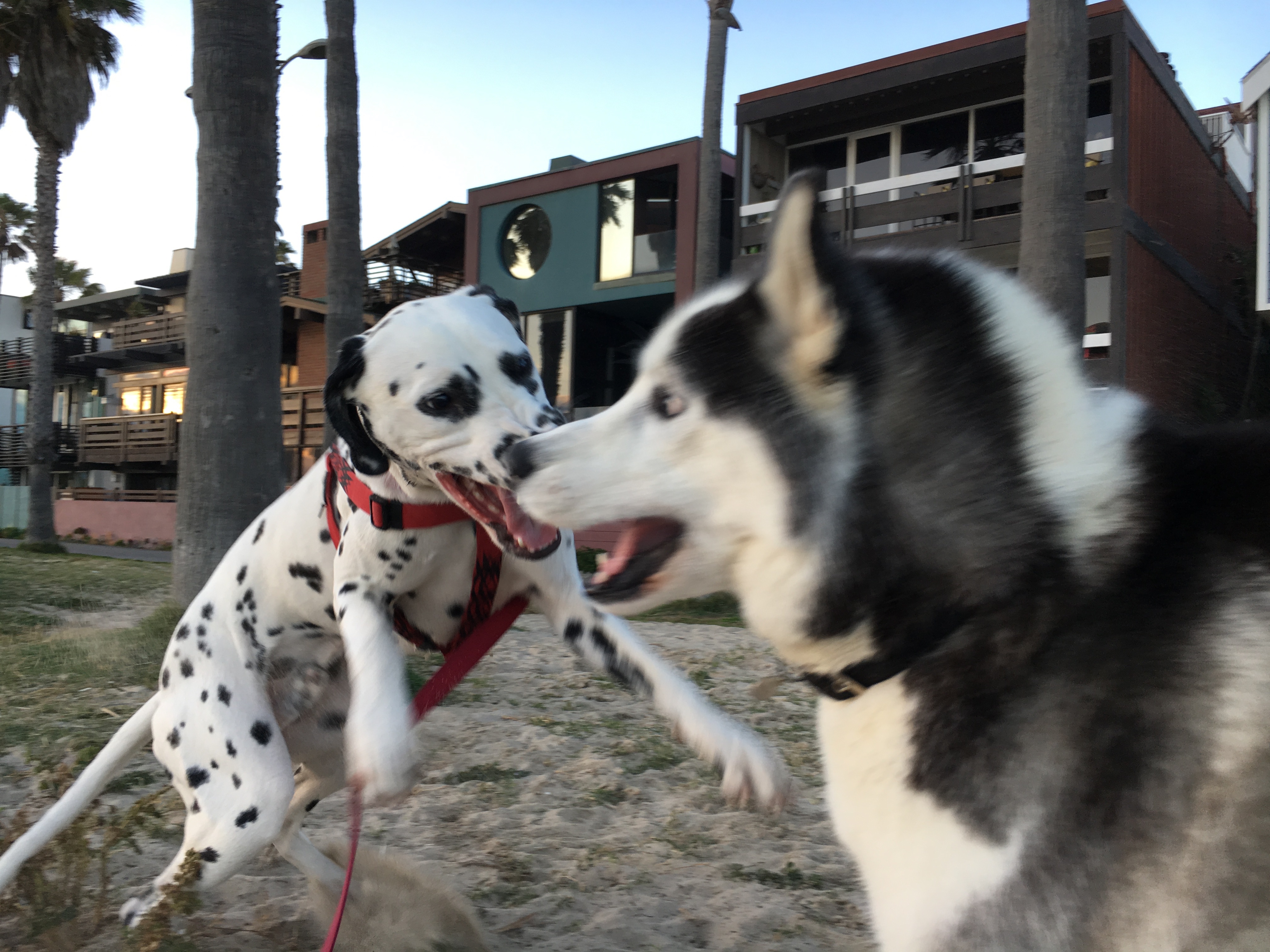Dog Behavior Class: Eliminating Dog on Dog Aggression
By: David Codr
Published Date: July 4, 2017
Does your dog act aggressively around other dogs, but behave well the rest of the time?
As soon as you see another dog out on a walk, do you tighten your grip on your dog’s leash? Turn around or move to the other side of the street? Or do other dog walkers turn around when they see you coming?
If that sounds like you, or your dog engages in other aggressive dog behaviors, we have a dog behavior class that can help you stop this unwanted behavior for good.
Dogs act aggressively for many reasons, but we have developed a technique that helps your dog aggressive dog learn to stop acting that way. We use dog psychology, counterconditioning, desensitization and positive reinforcement to transform how your dog views other dogs.
Our weekly dog classes are structured to put your dog into a position to succeed around other dogs by exposing them to new dogs, but at a distance and under a controlled setting. By increasing the distance and lowering the intensity while simultaneously building up a positive association, we can help your dog see other dogs as a positive. This type of positive dog training can help your dog get over its dog aggression problem for good.
One of our earliest success stories is of Maizey, a four-year-old Carin Terrier / Dachsund Mix from Omaha…
“My dog Miss Maizey learned a lot (and so did I) during the Aggressive Dog training sessions with staff at Dog Gone Problems,” says Maizey’s guardian Freddie Holeyfield. “She can now pass another dog on a walk without barking…Thanks Staff.”
These classes are held on Saturday mornings (1030 AM) in Omaha and last for 30-60 minutes (Depending on the number of dogs).
We will point out your dog’s warning signs, teach you how to redirect it effectively, show you how to put your dog into a position to succeed and most importantly, see other dogs as a good thing.
If you would like more information on the class, please copy the form below and send it to us with your answers to doggoneproblems@gmail.com.
For the level questions, use 1 to indicate a low level and 10 to indicate the highest level.
- Your name:
- Ph:
- Dog’s name:
- Age:
- Breed:
- Weight:
- Level of aggression:
- Dog’s energy level:
- Dog’s confidence level at home:
- Dog’s confidence level around other dogs:
- Bite history (if any):
- Notes about your dog:
Categorized in: Dog Behavior


